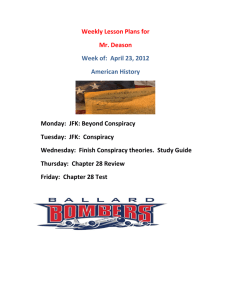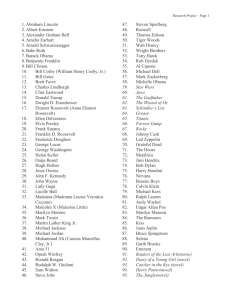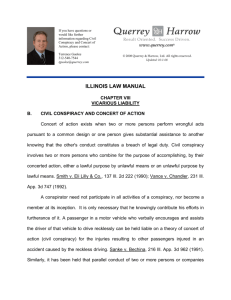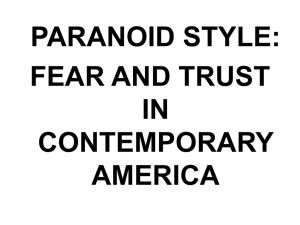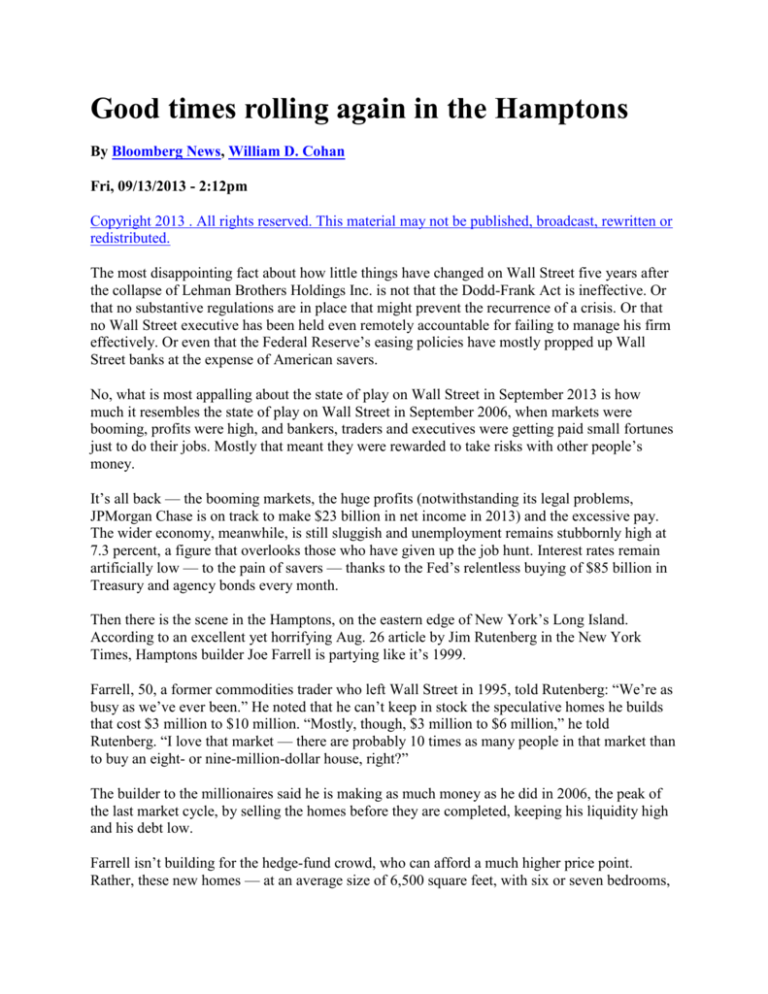
Good times rolling again in the Hamptons
By Bloomberg News, William D. Cohan
Fri, 09/13/2013 - 2:12pm
Copyright 2013 . All rights reserved. This material may not be published, broadcast, rewritten or
redistributed.
The most disappointing fact about how little things have changed on Wall Street five years after
the collapse of Lehman Brothers Holdings Inc. is not that the Dodd-Frank Act is ineffective. Or
that no substantive regulations are in place that might prevent the recurrence of a crisis. Or that
no Wall Street executive has been held even remotely accountable for failing to manage his firm
effectively. Or even that the Federal Reserve’s easing policies have mostly propped up Wall
Street banks at the expense of American savers.
No, what is most appalling about the state of play on Wall Street in September 2013 is how
much it resembles the state of play on Wall Street in September 2006, when markets were
booming, profits were high, and bankers, traders and executives were getting paid small fortunes
just to do their jobs. Mostly that meant they were rewarded to take risks with other people’s
money.
It’s all back — the booming markets, the huge profits (notwithstanding its legal problems,
JPMorgan Chase is on track to make $23 billion in net income in 2013) and the excessive pay.
The wider economy, meanwhile, is still sluggish and unemployment remains stubbornly high at
7.3 percent, a figure that overlooks those who have given up the job hunt. Interest rates remain
artificially low — to the pain of savers — thanks to the Fed’s relentless buying of $85 billion in
Treasury and agency bonds every month.
Then there is the scene in the Hamptons, on the eastern edge of New York’s Long Island.
According to an excellent yet horrifying Aug. 26 article by Jim Rutenberg in the New York
Times, Hamptons builder Joe Farrell is partying like it’s 1999.
Farrell, 50, a former commodities trader who left Wall Street in 1995, told Rutenberg: “We’re as
busy as we’ve ever been.” He noted that he can’t keep in stock the speculative homes he builds
that cost $3 million to $10 million. “Mostly, though, $3 million to $6 million,” he told
Rutenberg. “I love that market — there are probably 10 times as many people in that market than
to buy an eight- or nine-million-dollar house, right?”
The builder to the millionaires said he is making as much money as he did in 2006, the peak of
the last market cycle, by selling the homes before they are completed, keeping his liquidity high
and his debt low.
Farrell isn’t building for the hedge-fund crowd, who can afford a much higher price point.
Rather, these new homes — at an average size of 6,500 square feet, with six or seven bedrooms,
a pool and a tennis court — are clearly aimed at the Wall Street banker or trader in his or her late
40s who has been at the game for a decade or more. What’s astonishing is that, five years after
almost causing the collapse of capitalism as we know it, this cohort is back and doing better than
ever.
Some of Rutenberg’s additional details of life in the swanky Hamptons make that clear. For
instance, Farrell gave Rutenberg a tour of his own $43 million, 17,000-square-foot estate, known
as the Sandcastle. It comes complete with “two bowling lanes, a skate ramp, onyx window
frames and, just for fun, an A.T.M. regularly restocked with $20,000 in $10 bills.” Farrell rents
the home for $500,000 for two weeks; last year, Jay-Z and Beyonce were tenants. Farrell also
somehow got hedge- fund manager Marc Leder to pay $900,000 for another summer rental.
Rutenberg also reported that local yacht and Porsche sales are climbing again in the Hamptons
and that it is no longer unusual for people to buy six-liter bottles of Dom Perignon for $30,000.
(Smaller bottles of Dom are going for $8,000 each.) “It was a bit lean for a couple of years in the
Hamptons,” one local club owner told the Times. “There’s this at least perception that we’re
doing a lot better than perhaps we were, so people are freer to spend money because they’re
being psychologically conditioned with the highs in the market.”
Farrell thinks January’s budget deal in Washington, which avoided the so-called fiscal cliff,
helped unleash the latest round of animal spirits in the Hamptons. But what sent things into
overdrive in his world — where summer rentals are apparently approaching $1 million a pop —
are the policies of the Federal Reserve. “The stock market’s flying through the roof and who’s
that helping, the middle class? No, I mean that’s the reality,” he said. “Out here, life goes on.”
Sadly, recent data bolster his point. The incomes of the top 1 percent plunged during the
recession, but economists Emmanuel Saez and Thomas Piketty show that the wealthy have since
recovered almost all their lost ground. The incomes of the other 99 percent, meanwhile, have
barely nudged upward. The gains from the bull market in stocks, rising home prices and glowing
corporate profits are all flowing to the affluent.
Can the legacy of the 2008 financial crisis really be that the accidental rich have gotten rich
again and have returned to their carefree, spendthrift ways? I am all for entrepreneurs getting
unlimited financial rewards for figuring out better ways to do the things that people seem to
want. But what really sticks in my craw is when the Wall Street bankers and traders who got us
into the mess five years ago — and whom the American people bailed out — continue to get
huge bonuses that come from taking risks with other people’s money without so much as a
second thought.
William D. Cohan, the author of “Money and Power: How Goldman Sachs Came to Rule the
World,” is a Bloomberg View columnist.
Teachers should be more aggressive if
gunman in school, new theory says
By Jill Tucker, San Francisco Chronicle
Fri, 09/13/2013 - 9:46am
Copyright 2013 . All rights reserved. This material may not be published, broadcast, rewritten or
redistributed.
Images
If a gunman shows up at a school, teachers know what to do: lock their classroom doors, pull down the shades, turn out the lights
and then hunker down with students to wait for the police.
Such a lockdown would typically be set off by a coded intercom announcement from
administrators -- maybe something as innocent sounding as, “Teachers, your checks are in the
office.”
The standard protocol aims to keep everyone in place and quiet, hidden as much as possible
without alarming students by telling them the real situation or alerting the shooter.
But it just doesn’t work: “The targets are too easy,” said Greg Crane, the co-founder of a moreaggressive active shooter training system increasingly being used at schools across the country.
The passive lockdown didn’t work at Columbine High in 1999 and it didn’t work at Sandy Hook
Elementary last year, Crane said.
It’s a harsh assessment, but one that’s a wake-up call for many districts, pushing them to rethink
their protocols for that deadly, worst-case scenario, he said.
‘‘Ten years ago, I was called controversial,” said Crane, a former police officer who started the
Alice Training Institute in Texas with his then-teacher wife.
Alice -- short for alert, lockdown, inform, counter, evacuate -- offers training to schools,
companies and police departments and calls for potential victims to do more than try to hide.
‘‘The common theme is that you don’t have to accept being a victim,” said Greg Spicer,
associate superintendent of the Merced City Elementary School District, where officials have
been rolling out the Alice training with staff and at schools for the past couple of years. “You can
be proactive for yourself and your children for their own safety.
‘‘You don’t have to just hope you’re not the unlucky class.”
Not everyone, however, is ready to embrace their inner Rambo, said one California teacher who
recently went through Alice training.
The teacher, who didn’t want to be named because of job-security concerns, questioned whether
school staff could be held legally responsible for actions taken or not taken using Alice
techniques and whether attorneys and the local police have endorsed the program.
In addition, the teacher’s classroom currently lacks working window shades and a dead bolt on
the door -- seemingly the first line of defense in a dangerous situation.
‘‘If both things were in place already, I might begin to consider other options,” the teacher said.
But the Alice method hasn’t been tested in a real-life situation, the teacher said.
‘‘It’s hard to know if lives would be saved if you’re fighting back in this way,” the teacher
added.
The Alice training teaches people to use whatever tactical advantage they might have, especially
in numbers.
In the Columbine library, where 10 were killed and 12 injured in the shooting, it was 56 against
two.
‘‘But the two won,” Crane said. “It shouldn’t happen that way.”
If confronted by a gunman, Alice trainees are taught that noise, movement and distraction are
critical.
That means throwing things at the shooter, maybe books, bags or staplers.
‘‘If I can get your eyes to go to a moving stimulus, you’re no longer looking at me,” Crane said.
“It seriously interferes with the ability to shoot accurately.”
Overpowering the individual is also part of the training, albeit a last resort.
The training also encourages escape if at all possible and takes a different approach to alerting
everyone to the presence of a shooter.
Code words are out.
Whoever sees the shooter first is advised to announce his presence over the intercom, telling
everyone what he looks like, where he is and what he’s carrying.
‘‘Tell them what you know. Tell the people where it’s going on and how,” Crane said.
“Empower them to make decisions about the opportunity to evacuate. What can we say (the
shooter) doesn’t know?”
While Oakland, Calif., schools Police Chief James Williams was unfamiliar with Alice training,
he said he has given similar advice in recent months.
‘‘Shortly after Sandy Hook occurred, I had conversations with all the principals. I told them that
if they were in a situation where there were no other options, that throwing a book, chair or an
object at a gunman could give them or others a few seconds to escape,” Williams said. “I also
told them if it was in them, that they could reduce the number of children that may be injured by
attempting to overpower or subdue a gunman by themselves or with others.”
(Contact San Francisco Chronicle writer Jill Tucker at jtucker@sfchronicle.com. Distributed by
Scripps Howard News Service, www.shns.com.)
Gap between rich, poor Americans widest
since Roaring '20s
By Paul Wiseman, The Associated Press
Tue, 09/10/2013 - 2:31pm
Copyright 2013 . All rights reserved. This material may not be published, broadcast, rewritten or
redistributed.
Images
WASHINGTON -- The gulf between the richest 1 percent and the rest of America is the widest
it's been since the Roaring '20s.
The very wealthiest Americans earned more than 19 percent of the country's household income
last year - their biggest share since 1928, the year before the stock market crash. And the top 10
percent captured a record 48.2 percent of total earnings last year.
U.S. income inequality has been growing for almost three decades. And it grew again last year,
according to an analysis of Internal Revenue Service figures dating to 1913 by economists at the
University of California, Berkeley, the Paris School of Economics and Oxford University.
One of them, Berkeley's Emmanuel Saez, said the incomes of the richest Americans surged last
year in part because they cashed in stock holdings to avoid higher capital gains taxes that took
effect in January.
In 2012, the incomes of the top 1 percent rose nearly 20 percent compared with a 1 percent
increase for the remaining 99 percent.
The richest Americans were hit hard by the financial crisis. Their incomes fell more than 36
percent in the Great Recession of 2007-09 as stock prices plummeted. Incomes for the bottom 99
percent fell just 11.6 percent, according to the analysis.
But since the recession officially ended in June 2009, the top 1 percent have enjoyed the benefits
of rising corporate profits and stock prices: 95 percent of the income gains reported since 2009
have gone to the top 1 percent.
That compares with a 45 percent share for the top 1 percent in the economic expansion of the
1990s and a 65 percent share from the expansion that followed the 2001 recession.
The top 1 percent of American households had pretax income above $394,000 last year. The top
10 percent had income exceeding $114,000.
The income figures include wages, pension payments, dividends and capital gains from the sale
of stocks and other assets. They do not include so-called transfer payments from government
programs such as unemployment benefits and Social Security.
The gap between rich and poor narrowed after World War II as unions negotiated better pay and
benefits and as the government enacted a minimum wage and other policies to help the poor and
middle class.
The top 1 percent's share of income bottomed out at 7.7 percent in 1973 and has risen steadily
since the early 1980s, according to the analysis.
Economists point to several reasons for widening income inequality. In some industries, U.S.
workers now compete with low-wage labor in China and other developing countries. Clerical and
call-center jobs have been outsourced to countries such as India and the Philippines.
Increasingly, technology is replacing workers in performing routine tasks. And union power has
dwindled. The percentage of American workers represented by unions has dropped from 23.3
percent in 1983 to 12.5 percent last year, according to the Labor Department.
The changes have reduced costs for many employers. That is one reason corporate profits hit a
record this year as a share of U.S. economic output, even though economic growth is sluggish
and unemployment remains at a high 7.2 percent.
America's top earners tend to be highly paid executives or entrepreneurs - the "working rich" instead of elites who enjoy lives of leisure on inherited wealth, Saez wrote in a report that
accompanied the new analysis.
Still, he added: "We need to decide as a society whether this increase in income inequality is
efficient and acceptable."
WASHINGTON (AP) - The gap in employment rates between America's highest- and lowest-income
families has stretched to its widest levels since officials began tracking the data a decade ago,
according to an analysis of government data conducted for The Associated Press.
Rates of unemployment for the lowest-income families – those earning less than $20,000 – have
topped 21 percent, nearly matching the rate for all workers during the 1930s Great Depression.
U.S. households with income of more than $150,000 a year have an unemployment rate of 3.2
percent, a level traditionally defined as full employment. At the same time, middle-income workers
are increasingly pushed into lower-wage jobs. Many of them in turn are displacing lower-skilled, lowincome workers, who become unemployed or are forced to work fewer hours, the analysis shows.
"This was no `equal opportunity' recession or an `equal opportunity' recovery," said Andrew Sum,
director of the Center for Labor Market Studies at Northeastern University. "One part of America is in
depression, while another part is in full employment."
The findings follow the government's tepid jobs report this month that showed a steep decline in the
share of Americans working or looking for work. On Sunday, President Barack Obama stressed the
need to address widening inequality, warning that proposed budget cuts will worsen the gap.
"The folks in the middle and at the bottom haven't seen wage or income growth," Obama said on
ABC's "This Week."
While the link between income and joblessness may seem apparent, the data are the first to
establish how this factor has contributed to the erosion of the middle class, a traditional strength of
the U.S. economy.
Based on employment-to-population ratios, which are seen as a reliable gauge of the labor market,
the employment disparity between rich and poor households remains at the highest levels in more
than a decade, the period for which comparable data are available.
"It's pretty frustrating," says Annette Guerra, 33, of San Antonio, who has been looking for a full-time
job since she finished nursing school more than a year ago. During her search, she found that
employers had become increasingly picky about an applicant's qualifications in the tight job market,
often turning her away because she lacked previous nursing experience or because she wasn't
certified in more areas.
Guerra says she now gets by doing "odds and ends" jobs such as a pastry chef, bringing in $500 to
$1,000 a month, but she says daily living can be challenging as she cares for her mother, who has
end-stage kidney disease.
"For those trying to get ahead, there should be some help from government or companies to boost
the economy and provide people with the necessary job training," says Guerra, who hasn't ruled out
returning to college to get a business degree once her financial situation is more stable. "I'm
optimistic that things will start to look up, but it's hard."
Last year the average length of unemployment for U.S. workers reached 39.5 weeks, the highest
level since World War II. The duration of unemployment has since edged lower to 36.5 weeks based
on data from January to July, still relatively high historically.
Economists call this a "bumping down" or "crowding out" in the labor market, a domino effect that
pushes out lower-income workers, pushes median income downward and contributes to income
inequality. Because many mid-skill jobs are being lost to globalization and automation, recent U.S.
growth in low-wage jobs has not come fast enough to absorb displaced workers at the bottom.
Low-wage workers are now older and better educated than ever, with especially large jumps in those
with at least some college-level training.
"The people at the bottom are going to be continually squeezed, and I don't see this ending anytime
soon," said Harvard economist Richard Freeman. "If the economy were growing enough or unions
were stronger, it would be possible for the less educated to do better and for the lower income to
improve. But in our current world, where we are still adjusting to globalization, that is not very likely
to happen."
The figures are based on an analysis of the Census Bureau's Current Population Survey by Sum
and Northeastern University economist Ishwar Khatiwada. They are supplemented with material
from the Massachusetts Institute of Technology's David Autor, an economics professor known for his
research on the disappearance of mid-skill positions, as well as John Schmitt, a senior economist at
the Center for Economic and Policy Research, a Washington think tank. Mark Rank, a professor at
Washington University in St. Louis, analyzed data on poverty.
The overall rise in both the unemployment rate and low-wage jobs due to the recent recession
accounts for the record number of people who were stuck in poverty in 2011: 46.2 million, or 15
percent of the population. When the Census Bureau releases new 2012 poverty figures on Tuesday,
most experts believe the numbers will show only slight improvement, if any, due to the slow pace of
the recovery.
Overall, more than 16 percent of adults ages 16 and older are now "underutilized" in the labor
market – that is, they are unemployed, "underemployed" in part-time jobs when full-time work is
desired or among the "hidden unemployed" who are not actively job hunting but express a desire for
immediate work.
Among households making less than $20,000 a year, the share of underutilized workers jumps to
about 40 percent. For those in the $20,000-to-$39,999 category, it's just over 21 percent and about
15 percent for those earning $40,000 to $59,999. At the top of the scale, underutilization affects just
7.2 percent of those in households earning more than $150,000.
By race and ethnicity, black workers in households earning less than $20,000 were the most likely to
be underutilized, at 48.4 percent. Low-income Hispanics and whites were almost equally as likely to
be underutilized, at 38 percent and 36.8 percent, respectively, compared to 31.8 percent for lowincome Asian-Americans.
Loss of jobs in the recent recession has hit younger, less-educated workers especially hard. Fewer
teenagers are taking on low-wage jobs as older adults pushed out of disappearing mid-skill jobs,
such as bank teller or administrative assistant, move down the ladder.
Eric Reichert, 45, of West Milford, N.J. Reichert, who holds a master's degree in library science, is
among the longer-term job seekers. He had hoped to find work as a legal librarian or in a similar
research position after he was laid off from a title insurance company in 2008. Reichert now works in
a lower-wage administrative records position, also helping to care for his 8-year-old son while his
wife works full-time at a pharmaceutical company.
"I'm still looking, and I wish I could say that I will find a better job, but I can no longer say that with
confidence," he said. "At this point, I'm reconsidering what I'm going do, but it's not like I'm 24 years
old anymore."
___
Associated Press writer Tom Raum, Director of Polling Jennifer Agiesta and News Survey Specialist
Dennis Junius contributed to this report.
Don’t let evidence get in the way of a good
conspiracy theory
By E. Kent Winward, Standard-Examiner
Mon, 09/09/2013 - 10:46am
Copyright 2013 . All rights reserved. This material may not be published, broadcast, rewritten or
redistributed.
Images
This last week, in a quest to resurrect movies from the 1990s, my wife and I watched the Mel
Gibson/Julia Roberts movie, “Conspiracy Theory.” In the movie, Mel Gibson plays to type as an
eccentric crazy-person, spouting off conspiracy theories. His best theory is that NASA is using
sonic waves to make an attempt on the president’s life by causing an earthquake when the
president visits Turkey. The reason given for NASA going after the president is that he wants to
defund the space program.
If I forgo the suspension of disbelief required for a Hollywood movie, I would first have to ask
myself why conspiracy theorists always have such a poor grasp of basic civics. The House Ways
and Means Committee would be a far better target than the president. When it comes to funding,
civics says look to congress, not the president.
A complete ignorance of civics aside, the most compelling thing about a conspiracy theory is that
any evidence contrary to the theory only tends to increase its likelihood. If you don’t believe me,
just argue with someone who believes a “conspiracy theory.” Contrary evidence becomes
evidence of the conspiracy. Bombs really brought down the World Trade Center, not the planes
flying into the buildings. The planes, the terrorists who hijacked the planes were simply a
distraction hiding the real intent and the real perpetrators. The evidence doesn’t matter, because
the more evidence you show to prove the conspiracy theory wrong, only proves how masterful
the conspirators were. If you still doubt me, argue with a conspiracy theorist on Facebook.
Conspiracy theories operate in exact opposition to the way our legal system is designed to
operate. Contrary evidence is seen legally as evidence to decrease the likelihood of a theory, not
increase it. The law has developed an elaborate set of rules of evidence to eliminate error and to
find the truth in the courtroom. Those who aren’t familiar with the courtroom can find the rules
very limiting and feel like the court is trying to keep people away from the truth, rather than
illuminate the truth.
One classic rule of evidence that limits testimony is the hearsay rule. (Hearsay also happens to be
the most used tool of the conspiracy theorist and urban legend perpetrators.) The definition of
hearsay in the Rules of Evidence is “a party offers in evidence to prove the truth of the matter
asserted in the statement.” Maybe part of our problems as lawyers is that we say things that make
people who speak normal English, say “Huh?” A better way to think about hearsay is like this: If
you didn’t see it happen, you can’t testify about what happened, even if someone told you what
happened.
Of course being lawyers and human, we like hearing hearsay as much as the next person, so the
rule against hearsay has about 30 exceptions, including a general exception that gives you an
opportunity to prove the hearsay can be seen as reliable.
The point is, we have centuries of trials (and errors) to find out what makes evidence reliable in
the courtroom. The goal of the justice system isn’t to hide truth, but to discover it by removing
human bias, prejudice, passion and error from the process. Is the system perfect? No, but it is a
system that is constantly analyzed and adjusted to achieve better results. If there is a conspiracy,
it is an open conspiracy of judges and lawyers sending emails back and forth over how the court
rules can be tweaked and improved.
Or of course, this column could really be just part of a bigger legal conspiracy.
E. Kent Winward is an Ogden attorney. He can be reached at 801-392-8200 or
creditcorrection@gmail.com.

